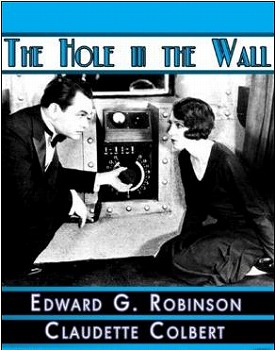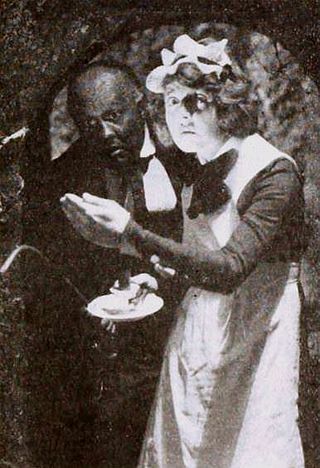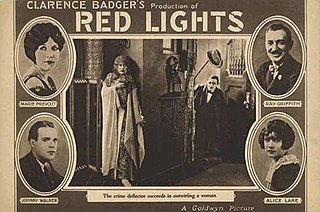Related Research Articles
This is an overview of 1929 in film, including significant events, a list of films released and notable births and deaths.
The following is an overview of 1926 in film, including significant events, a list of films released, and notable births and deaths.
This is an overview of 1924 in film, including significant events, a list of films released and notable births and deaths.
This is an overview of 1921 in film, including significant events, a list of films released and notable births and deaths.
The year 1918 in film involved some significant events.
1917 in film was a particularly fruitful year for the art form, and is often cited as one of the years in the decade which contributed to the medium the most, along with 1913. Secondarily the year saw a limited global embrace of narrative film-making and featured innovative techniques such as continuity cutting. Primarily, the year is an American landmark, as 1917 is the first year where the narrative and visual style is typified as "Classical Hollywood".
The year 1915 in film involved some significant events.
The year 1914 in film involved some significant events, including the debut of Cecil B. DeMille as a director.
1913 was a particularly fruitful year for film as an art form, and is often cited one of the years in the decade which contributed to the medium the most, along with 1917. The year was one where filmmakers of several countries made great artistic advancements, producing notable pioneering masterpieces such as The Student of Prague, Suspense, Atlantis, Raja Harischandra, Juve contre Fantomas, Quo Vadis?, Ingeborg Holm, The Mothering Heart, Ma l’amor mio non muore!, L’enfant de Paris and Twilight of a Woman's Soul.

The Last Performance is a 1929 American sound part-talkie film directed by Paul Fejos and starring Conrad Veidt and Mary Philbin. In addition to sequences with audible dialogue or talking sequences, the film features a synchronized musical score and sound effects along with English intertitles. The soundtrack was recorded using the Western Electric sound-on-film system. The talking sequences were featured on the last reel.

The Ace of Scotland Yard is a 1929 Universal movie serial. It was the first partial sound serial released by Universal Pictures. The film was released in September 1929. It was a part-talkie serial using music and sound effects.

The Hole in the Wall is a 1929 pre-Code mystery drama film directed by Robert Florey, and starring Claudette Colbert and Edward G. Robinson. This early talking picture was the first appearance of Edward G. Robinson in the role of a gangster, and "can be viewed as a dry run for his eventual success ". It was also one of Colbert's first film appearances.

The Unholy Night is a 1929 American pre-Code mystery film directed by Lionel Barrymore and starring Ernest Torrence.

Joseph Striker was an American actor. He appeared in 28 films between 1920 and 1929. Later in the 1930s he appeared on Broadway.

The Haunted Bedroom is a lost 1919 American silent drama film directed by Fred Niblo and starring Enid Bennett and Dorcas Matthews. The film was also distributed under the title The Ghost of Whispering Oaks.

Seven Footprints to Satan is a sound part-talkie 1929 American mystery film directed by Danish filmmaker Benjamin Christensen. Based on the 1928 story of the same name by Abraham Merritt, it stars Thelma Todd, Creighton Hale, William V. Mong and Sheldon Lewis. In addition to sequences with audible dialogue or talking sequences, the film features a synchronized musical score and sound effects along with English intertitles. The film survives at the Cineteca Italiana in an alternate sound version known as an International Sound Version. The sound disks for this foreign sound version are apparently not extant.
The Yellow Claw is a 1921 British silent crime film directed by René Plaissetty and starring Sydney Seaward, Arthur M. Cullin and Harvey Braban. The film was shot partly at Cricklewood Studios and ran 68 minutes. It was based on the 1915 novel The Yellow Claw by Sax Rohmer, in which a French detective battles a notorious master criminal named Mr. King.

The Haunted House is a 1928 American synchronized sound mystery film directed by Benjamin Christensen. While the film has no audible dialog, it was released with a synchronized musical score with sound effects using the sound-on-disc Vitaphone process. The film stars Larry Kent and Thelma Todd and is based on Owen Davis's 1926 Broadway play of the same name. As of 2020, UCLA Film and Television Archive has a copy of the film.

Whispering Wires is a 1926 American mystery film directed by Albert Ray and written by William Conselman and Gordon Rigby. It is based on the 1918 novel Whispering Wires by Henry Leverage, which was also made into a stage play. The film stars Anita Stewart, Edmund Burns, Charles Clary, Otto Matieson, Mack Swain and Arthur Housman. The film was released on October 24, 1926, by Fox Film Corporation. Little is known about Henry Leverage, the author of the original novel, except that he served prison time in Sing Sing for car theft.

Red Lights is a 1923 American silent mystery film directed by Clarence G. Badger and starring Marie Prevost, Raymond Griffith and Johnnie Walker. The plot concerns a railroad tycoon who is about to be reunited with his daughter who was kidnapped many years ago.
References
- ↑ Pitts p.87
- 1 2 Workman, Christopher; Howarth, Troy (2016). Tome of Terror: Horror Films of the Silent Era. Midnight Marquee Press. p. 341. ISBN 978-1936168-68-2.